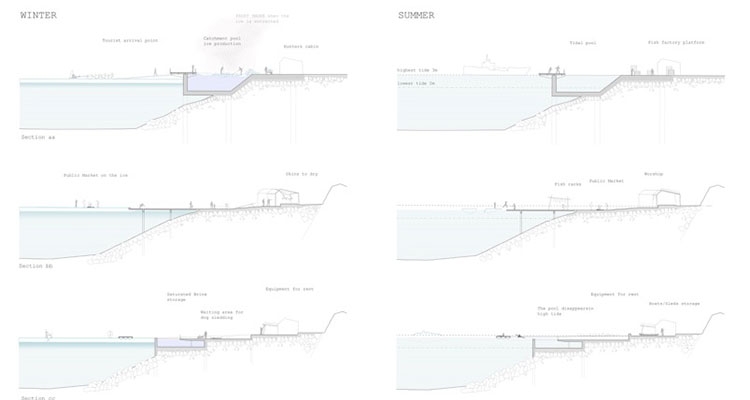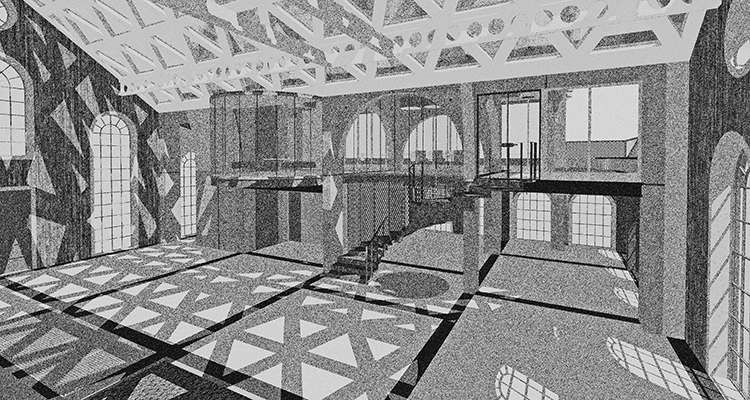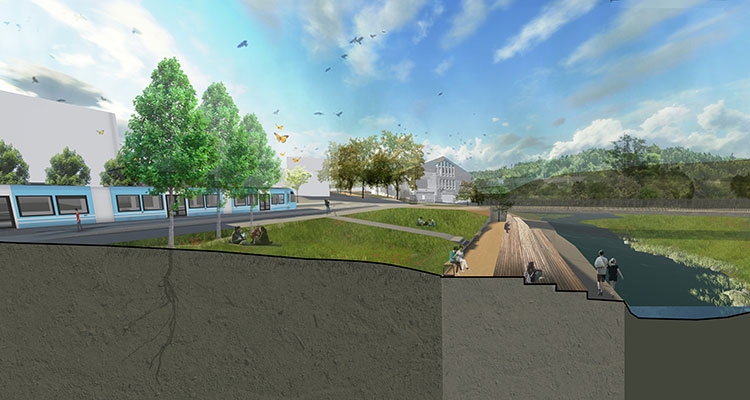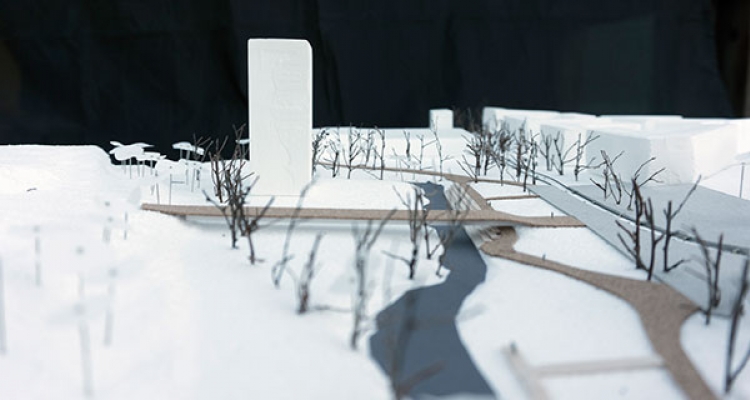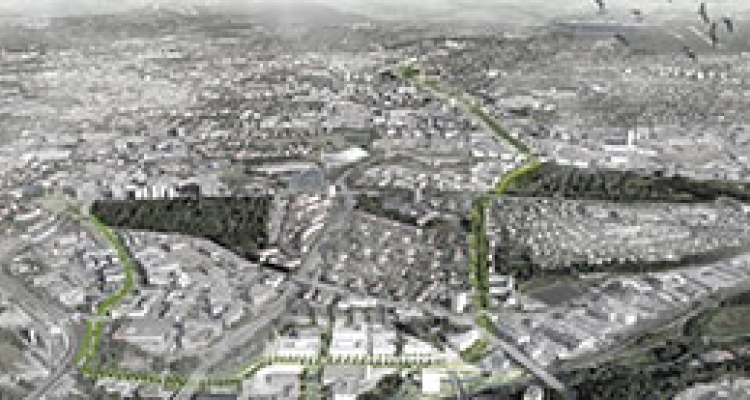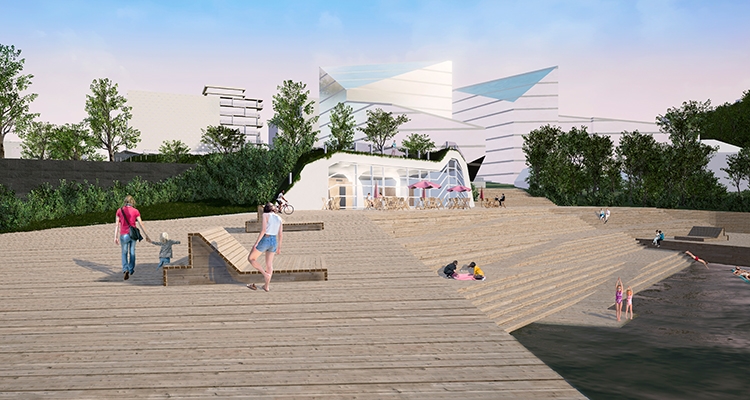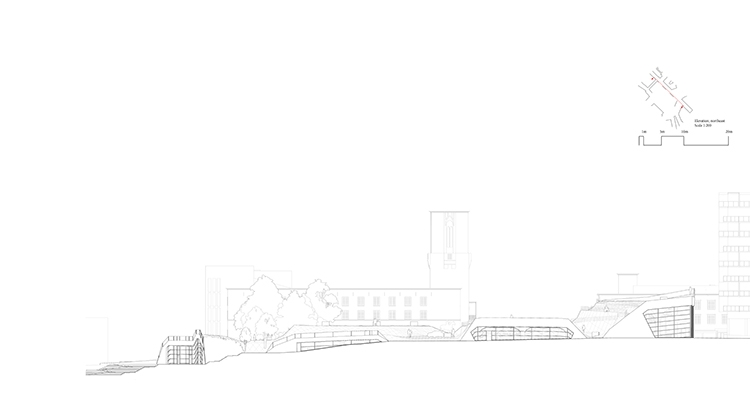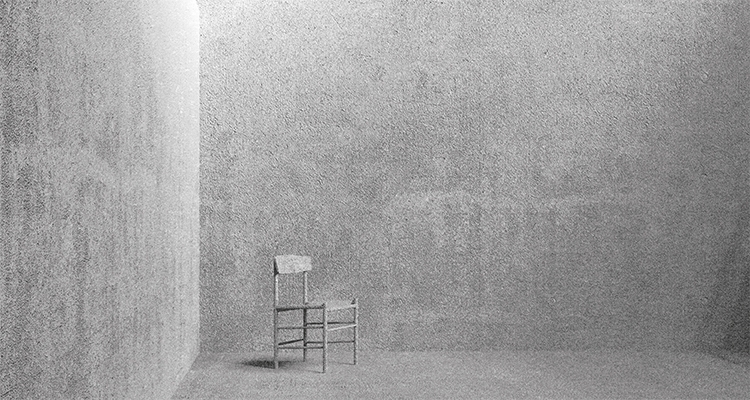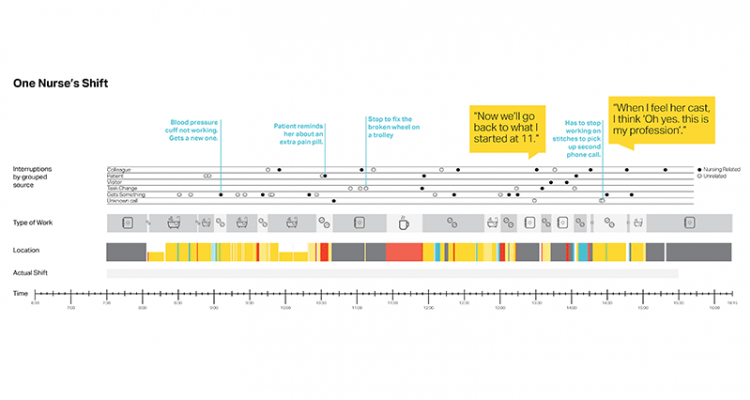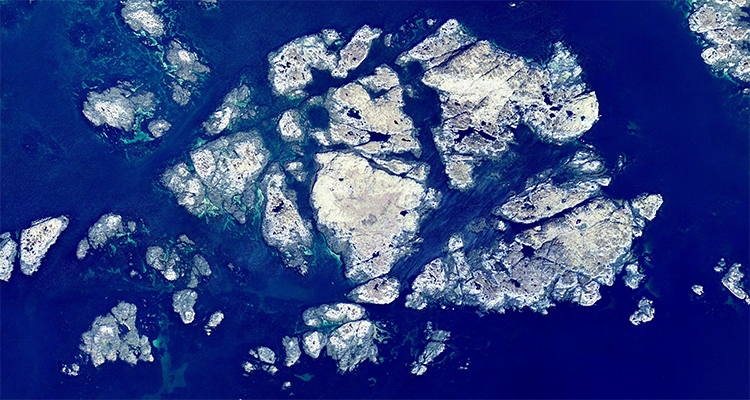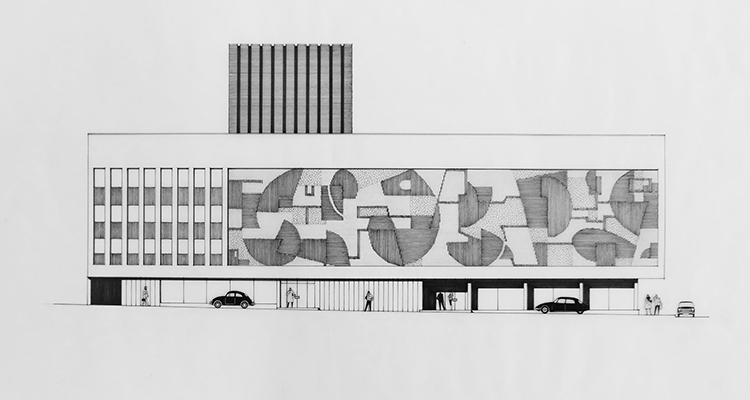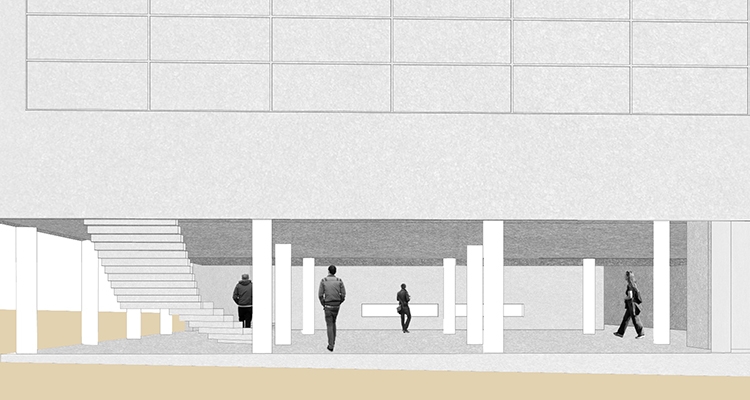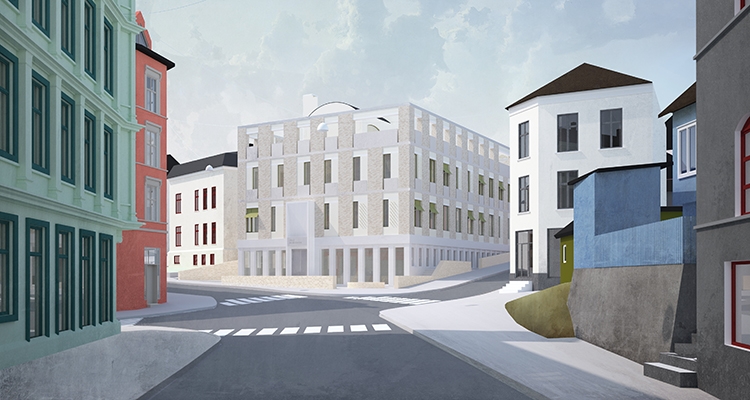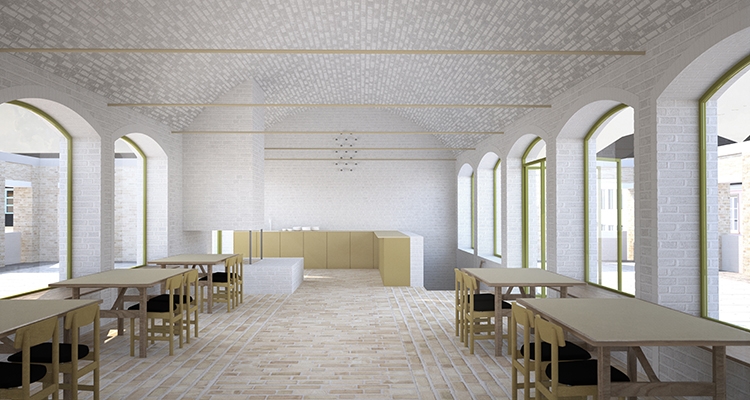The harvesting of sea-ice (winter) and sea-salt (summer) supports the preservation of fish that is later exported. Sea ice platforms with recreational uses in winter become an evaporation pools for salt extraction in summer. Using time and natural phenomena, the project aims to benefit from the aesthetics of certain industrial activities in order to enhance the beauty of the Arctic coastline. Flowers of salt covering ice surfaces or frozen smoke emerging from ice cracks are some of the elements that configure this landscape intervention.
Diploma project
Beyond the re-use of the original space, the diploma seeks to accentuate the original structure- a brick building rehabilitated back to its origin, as well as introducing new volumes- an extruded sink wing and a soaring, perforated brass volume.
The grid is strengthened by a system of steel- and pre-fabricated concrete pillars, beams and arches, supporting the additional volumes. Combined with clear sightlines and open structures, the steel truss roof of the production and assembly hall provides natural light and spaciousness.
The grid is strengthened by a system of steel- and pre-fabricated concrete pillars, beams and arches, supporting the additional volumes. Combined with clear sightlines and open structures, the steel truss roof of the production and assembly hall provides natural light and spaciousness.
Rather than just a linear infrastructure, the project envision the line as a vibrant network - generating experiences and recreational and visual qualities, as well as transportation.
Three areas along the corridor have been highlighted, where the design of new tram stops adresses different urban situations: the opening of the Alna River, the stop as a public square and densification along a new park with historical references.
Three areas along the corridor have been highlighted, where the design of new tram stops adresses different urban situations: the opening of the Alna River, the stop as a public square and densification along a new park with historical references.
Contrary to the surrounding extruded buildings the intention of my project is to articulate the building as a continued public landscape, generating a wide range of indoor and outdoor spaces. The border between the building and its surroundings are wiped out at selected locations, integrating it into the urban fabric. The building is designed to stimulate the further development of the city. The connection and closeness to the waterfront, and the new central public spaces, opens up for more development near the sea.
The design objective of this diploma project is to develop an architectural proposal that will facilitate and illuminate the literary work of Rolf Jacobsen. The project addresses architecture as a strategy to convey his authorship, with the desire of calling attention to the text.
Bilder
går rett inn.
Ord
må en omvei.
Sang og klang
går rett inn.
Bokstavene
må en omvei
innom i hausen
derfor
anstrengende. Til nød
plakatskrift
Bilder
går rett inn.
Ord
må en omvei.
Sang og klang
går rett inn.
Bokstavene
må en omvei
innom i hausen
derfor
anstrengende. Til nød
plakatskrift
The solution, of course, is obvious: close the cracks. After extensive observational research, it became clear that larger issues exist underneath the small, forgotten tasks. The staff often feel their jobs and responsibilities are constantly being changed, mostly by people who are too high up to see what the work really looks like. Shadowing the staff members revealed the nuances of working in a nursing home in a different way than had been shown before. This new information is now available through this interactive resource.
Every building has, if not a program, a purpose. In search of architecture on the place’ terms, I wanted to ensure that the place and its conditions also laid the premise for the purpose. Thus the program chosen was a farm.
A farm does not only relate to a place, it is, in the best cases, there because of it. As a sort of land keeper, dispensing its resources.
This, I think, is also how the best cases of architecture are brought out; as a spatial dispenser of its place. With awareness of changing it.
A farm does not only relate to a place, it is, in the best cases, there because of it. As a sort of land keeper, dispensing its resources.
This, I think, is also how the best cases of architecture are brought out; as a spatial dispenser of its place. With awareness of changing it.
Above Oslo is a contribution to the present discussion on high-rise buildings as a strategy for further densification in the central parts of Oslo. Placing the building close to an existing traffic node, gives several people the benefits of living an urban life. Timber is the main structural material. It has well-documented environmental properties as well as the advantage of being an important part of the Norwegian building culture.
Going to the theater has a strong ritual. You enter the building, often nicely dressed. You hang off your coat and collect your ticket. If you are with someone, you mingle and smalltalk in the foyer before it is time to enter the hall. There is often a walk towards it, and it often involves a staircase. It is clear where you are suppose to go. When entering the hall, you find your row and then your seat.
And then you wait.
And then you wait.
An independent school building in the city, vis-ible to the public, will create awareness and a common recognition to the craft of bricklaying. Altering the public`s perception of the profession will also help conceive student pride for their craft. Separating the school from the institu-tionalized high school model will also provide suitable education facilities for the specific handcraft.
Our ambition is to create a place that will educate and motivate bricklay-ers to appreciate and further develop their craft.
Our ambition is to create a place that will educate and motivate bricklay-ers to appreciate and further develop their craft.


